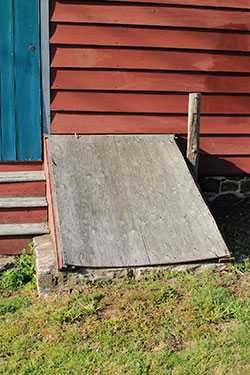Staying Safe in a Tornado
 To stay safe during a tornado, prepare a plan and emergency kit, stay aware of weather conditions during thunderstorms, know the best places to shelter both indoors and outdoors, and always protect your head.
To stay safe during a tornado, prepare a plan and emergency kit, stay aware of weather conditions during thunderstorms, know the best places to shelter both indoors and outdoors, and always protect your head.
On April 27, 2011, a series of deadly tornadoes destroyed parts of Tuscaloosa, Cullman, Birmingham and rural communities in northwest Alabama killing 247 people[498 KB] and nearly injuring 1,400. Nearly a month later, a monster tornado tore through Joplin, Missouri, killing 161 residents. In 2013, Oklahoma experienced back-to-back tornado events; the deadliest was in Moore, OK where 25 people died and almost 400 were injured.
According to the National Oceanic and Atmospheric Agency (NOAA) there is no guaranteed safety during a tornado. Indeed, we must take seriously even the possibility of a tornado. Although the most violent tornadoes can level and blow away almost any house and those within it, extremely violent EF5 tornadoes are very rare. Most tornadoes are much weaker. You can survive a tornado if you follow safety precautions. Here are three important tips to help keep you safe.

Make sure you and your loved ones know what constitutes a “safe shelter.”
TIP ❶: Be prepared.
The best way to stay safe during a tornado is to be prepared with:
- fresh batteries and a battery-operated TV, radio, or internet-enabled device to listen to the latest emergency weather information;
- a tornado emergency plan including access to a “safe shelter” for yourself and for people with special needs;
- an emergency kit (including water, non-perishable food, and medication); and
- a list of important information, including telephone numbers.
Make sure your children know what a tornado is, what tornado watches and warnings are, what county or parish they live in (warnings are issued by county or parish), and what constitutes a location as a “safe shelter,” whether at home or at school.
TIP ❷: Stay aware of weather conditions.
To protect yourself and your family from harm during a tornado, pay close attention to changing weather conditions in your area. If you know thunderstorms are expected, stay tuned to local radio and TV stations or a NOAA weather radio for further weather information. Some tornadoes strike rapidly without time for a tornado warning. The following weather signs may mean that a tornado is approaching:
- a dark or green-colored sky;
- a large, dark, low-lying cloud;
- large hail; or
- a loud roar that sounds like a freight train.
If you notice any of these conditions, take cover immediately, and keep tuned to local radio and TV stations or to a NOAA weather radio or check the internet.
TIP ❸: Know where to shelter.
Falling and flying debris causes most deaths and injuries during a tornado. Although there is no completely safe place during a tornado, some locations are much safer than others.
- Go to the basement or an inside room without windows on the lowest floor (bathroom, closet, center hallway).
- Avoid windows.
- For added protection get under something sturdy (a heavy table or workbench). Cover your body with a blanket, sleeping bag or mattress. Protect your head with anything available.
- Do not stay in a mobile home.
If you are outside or in a mobile home, find a nearby building preferably with a basement. If you are in a car, do not try to out run a tornado but find the nearest sturdy building. NOTE: You may need to change your plans and change locations when the tornado watch is issued.
No one can know a tornado’s strength before it touches down, so keep up with local weather information, especially when thunderstorms are forecast. Prepare your home and family for the possibility of a tornado. Moving to shelter quickly is easier when everyone knows where to go, whether in your home or outdoors. Following these tips will give you the best chance for staying safe in a tornado.
More Information
More Information
- Page last reviewed: April 10, 2017
- Page last updated: April 10, 2017
- Content source:
- National Center for Environmental Health, Division of Environmental Hazards and Health Effects
- Page maintained by: Office of the Associate Director for Communication, Digital Media Branch, Division of Public Affairs




 ShareCompartir
ShareCompartir